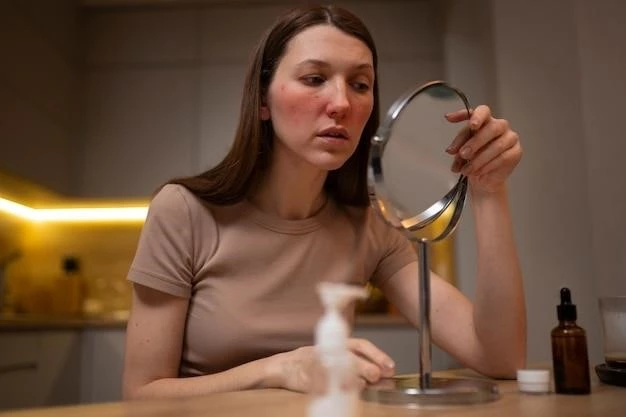Understanding cutaneous photosensitivity is crucial for individuals experiencing heightened skin reactions to sunlight exposure. This condition can manifest in various symptoms and is linked to different causes‚ including autoimmune diseases. Proper management and prevention strategies play a key role in mitigating the effects of photosensitivity.
Symptoms of Photosensitivity
Photosensitivity can manifest through a range of symptoms‚ including redness‚ rash‚ itching‚ blisters‚ and swelling upon exposure to sunlight. Some individuals may also experience a stinging or burning sensation on the skin. In severe cases‚ photosensitivity can lead to sunburn-like reactions or even trigger systemic symptoms such as fever‚ chills‚ and headache. It is crucial to recognize these signs promptly to seek appropriate medical attention and adopt measures for protection against further sun exposure.
Treatment Options for Photosensitivity
Managing photosensitivity involves various treatment approaches tailored to individual needs. Topical corticosteroids can help reduce inflammation and itching. Antihistamines may alleviate allergic reactions‚ while moisturizers can soothe dry or irritated skin. In more severe cases‚ phototherapy or systemic medications prescribed by a dermatologist may be necessary. Avoiding sun exposure during peak hours and wearing protective clothing are essential preventive measures. Consult a healthcare professional for personalized treatment recommendations.

How to Manage Photosensitivity
Effective management of photosensitivity involves a multi-faceted approach. Sun protection is paramount‚ including wearing broad-spectrum sunscreen‚ protective clothing‚ and hats. Seek shade during peak sunlight hours and utilize UV-protective accessories. Stay hydrated to maintain skin health and consider using UV-blocking window films at home. Regularly monitor skin changes and consult a dermatologist for tailored advice on skincare and lifestyle modifications to minimize sun-related reactions.
Causes of Cutaneous Photosensitivity
Cutaneous photosensitivity can stem from various sources‚ including medication side effects‚ genetic predisposition‚ and underlying medical conditions. Certain drugs‚ such as antibiotics‚ diuretics‚ and nonsteroidal anti-inflammatory drugs‚ can increase skin sensitivity to sunlight. Inherited disorders like xeroderma pigmentosum and porphyria can also lead to photosensitivity. Additionally‚ autoimmune diseases like lupus erythematosus can trigger skin reactions upon sun exposure. Understanding these causes is crucial for effectively managing and preventing photosensitivity reactions.
Photosensitivity in Different Skin Types
Photosensitivity reactions can vary significantly among different skin types. Individuals with fair skin are generally more prone to sunburn and UV damage due to lower melanin levels. Darker skin tones offer natural sun protection but are still susceptible to sun-induced skin problems. People with sensitive skin may experience heightened reactions to sunlight‚ while those with oily skin may face challenges in selecting appropriate sun protection products. Understanding how photosensitivity impacts diverse skin types is crucial for personalized sun care and risk mitigation.
Photosensitivity and Autoimmune Diseases
Photosensitivity is commonly associated with autoimmune diseases‚ where the body’s immune system mistakenly attacks healthy cells‚ leading to heightened skin reactions upon sun exposure. Conditions such as lupus erythematosus‚ dermatomyositis‚ and rheumatoid arthritis are known to exhibit photosensitive symptoms. The interaction between ultraviolet rays and the immune system can trigger inflammation and skin flare-ups in individuals with autoimmune disorders. Understanding this connection is essential for properly managing photosensitivity in the context of autoimmune diseases and promoting skin health.
Prevention Tips for Photosensitivity
Preventing photosensitivity reactions involves adopting various protective measures. Use broad-spectrum sunscreen with a high SPF‚ apply it generously‚ and reapply frequently. Wear protective clothing‚ sunglasses‚ and hats to shield skin from UV rays. Seek shade during peak sunlight hours‚ especially between 10 a.m. and 4 p.m. Be mindful of reflective surfaces like water and snow that can increase sun exposure. Stay hydrated and avoid tanning beds or artificial UV sources. Consult a dermatologist for personalized sun protection advice based on your skin type and medical history.
